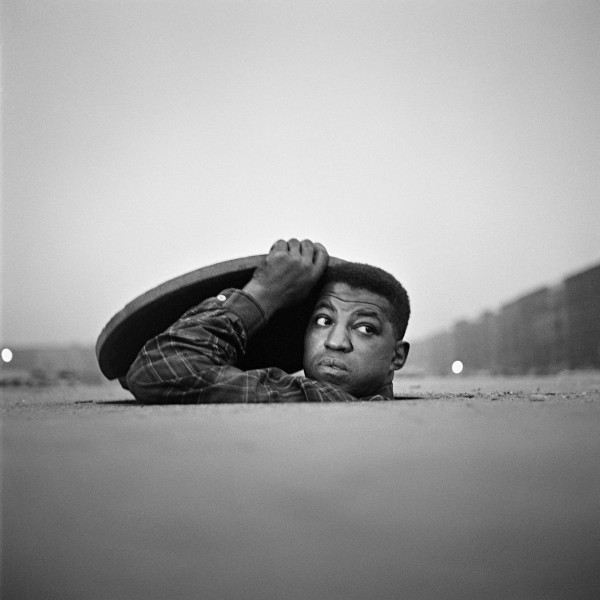

Invisible Man Retreat, Harlem, New York, 1952
In April 1952 Ralph Ellison published Invisible Man, his first and only finished novel and a work that is regarded today as one of the most important American literary works of the twentieth century. Written in the first person, the book is a stark account of America’s racial divisions and of the unnamed Black narrator’s awakening to his condition of invisibility—a realization that no one can see beyond what is projected onto the color of his skin.
Within months of the novel’s publication, Gordon Parks and Ellison collaborated on “A Man Becomes Invisible” for the August 25, 1952 issue of Life magazine. Parks set out to create photographs, many of them staged, that illustrate many of the novel’s key Harlem scenes, including the iconic image of the protagonist—portrayed by John Bates, a friend of Ellison’s—ending his hibernation and emerging aboveground. That photograph, which imagines the closing passages of the book, served as the opening image of the Life article.
Another elaborately staged photograph depicts the subterranean retreat that serves as the protagonist’s home after he is forced into hiding on the evening of a Harlem riot. It is in this illuminated, underground setting that the protagonist recounts his story, and that the book starts and ends. Parks created this image by superimposing a negative of a built set onto another of the New York City skyline at night. The final image brings to life Ellison's description: "My hole is warm and full of light. Yes, full of light. . . . In my hole in the basement there are exactly 1,369 lights. I’ve wired the entire ceiling, every inch of it. And not with fluorescent bulbs, but with the older, more-expensive-to-operate kind, the filament type. An act of sabotage, you know. Sometimes now I listen to Louis while I have my favorite dessert of vanilla ice cream and sloe gin. Perhaps I like Louis Armstrong because he’s made poetry out of being invisible."
These and other photographs from the series hew to Ellison’s prose style, which collapsed distinctions between realism and fantasy as a means of bringing to national consciousness the Black experience in postwar, twentieth century America.